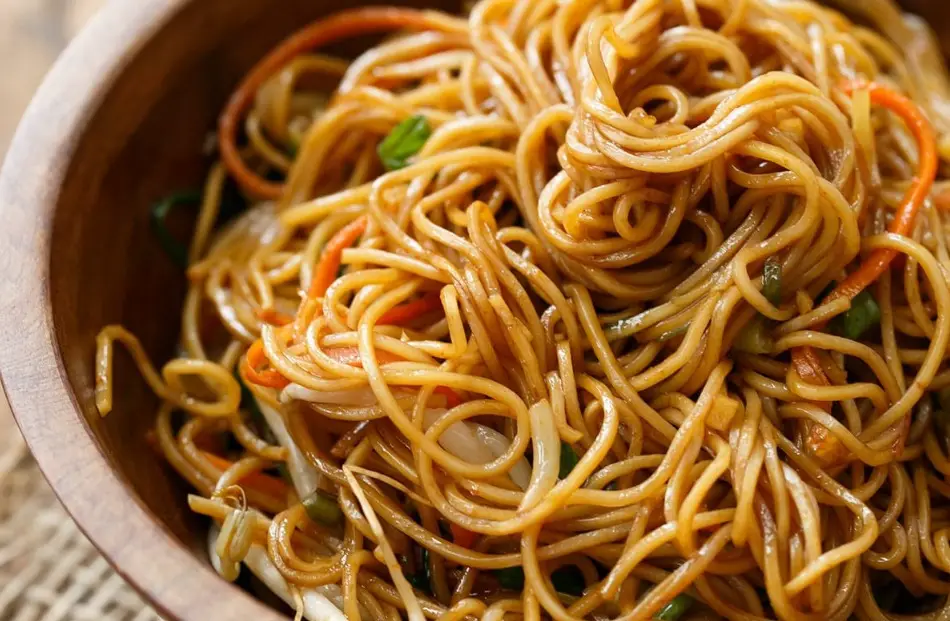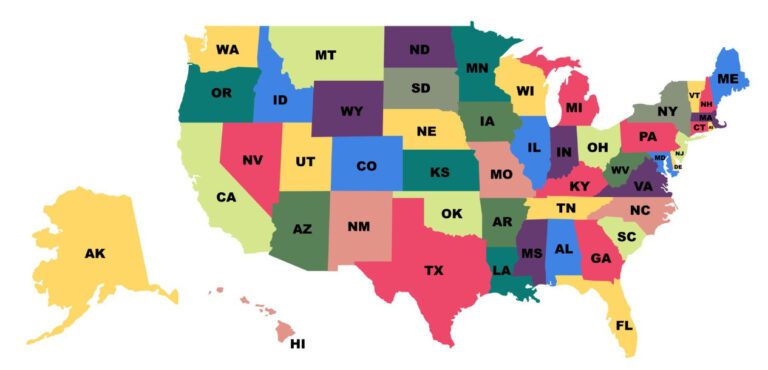Discover Your New Favorite Food Noodles – Explore the World of Noodles Today!
Explore the world of favorite food noodles with our comprehensive guide! From the history and types to delicious recipes and health benefits, find out why noodles are a global favorite and how you can enjoy them in countless ways. Click to dive into the delicious world of noodles!
Introduction
Noodles, a staple in many cultures worldwide, are more than just a food item; they’re a global favorite that transcends geographical and cultural boundaries. This culinary marvel, found in the form of long, slender strips, has the unique ability to adapt to various cooking styles and ingredients, making it a beloved dish in numerous countries. From the bustling streets of Tokyo to the cozy trattorias of Italy, noodles are celebrated for their versatility, simplicity, and downright deliciousness. They’re not just sustenance but a form of expression, carrying the flavors and traditions of the places they hail from.
The History of Favorite Food Noodles
The journey of noodles through history is as complex and varied as the noodles themselves. Believed to have originated in China over 4,000 years ago, the first documented instance of noodles dates back to the Han dynasty. However, their popularity and spread across Asia and eventually the world tell a story of cultural exchange and adaptation. As trade routes expanded, so did the varieties and methods of preparing noodles, making them a global phenomenon.

Types of Noodles
Noodles come in various forms, each with its unique texture, flavor, and cultural significance. Here’s a breakdown of some popular types:
1. Wheat-based noodles:
Wheat-based noodles are among the most common and widely enjoyed varieties. Made from wheat flour, water, and sometimes eggs, they come in different shapes and sizes, suited to various dishes and cuisines. Italian pasta, such as spaghetti, fettuccine, and penne, are classic examples of wheat-based noodles. These noodles are versatile and can be paired with a wide range of sauces and ingredients.
2. Rice noodles:
Rice noodles, also known as rice vermicelli or rice sticks, are a staple in Southeast Asian cuisine. Made from rice flour and water, they have a delicate texture and are often used in dishes like pad Thai, pho, and stir-fries. Rice noodles are gluten-free, making them suitable for those with gluten sensitivities or allergies. They absorb flavors well and are typically soaked in hot water before being added to dishes.
3. Other varieties:
Beyond wheat and rice, noodles can be made from various grains, legumes, and starches, offering diversity in texture and flavor. Examples include:
- Buckwheat noodles (soba): Popular in Japanese cuisine, soba noodles have a nutty flavor and are often served cold with a dipping sauce or in hot broth.
- Sweet potato noodles: Commonly used in Korean cuisine, sweet potato noodles, also known as dangmyeon, have a chewy texture and are often stir-fried with vegetables and meat.
- Egg noodles: Made with wheat flour and eggs, egg noodles have a rich flavor and are used in dishes like chow mein and chicken noodle soup.
Noodle Dishes Around the World
1. Asian noodle dishes:
Asian cuisine boasts a diverse array of noodle dishes, each reflecting the region’s unique flavors and culinary traditions. Some popular Asian noodle dishes include:
- Ramen (Japan): A hearty soup dish featuring wheat noodles in a flavorful broth, topped with ingredients like sliced pork, bamboo shoots, and nori.
- Pad Thai (Thailand): Stir-fried rice noodles with tofu, shrimp, or chicken, flavored with tamarind, fish sauce, and palm sugar, garnished with peanuts, lime, and cilantro.
- Pho (Vietnam): A fragrant noodle soup made with rice noodles, beef or chicken broth, and various herbs and spices, served with bean sprouts, lime, and chili peppers on the side.
2. European noodle dishes:
European cuisine also embraces noodles in various forms, often paired with rich sauces and hearty ingredients. Examples include:
- Spaghetti Bolognese (Italy): Spaghetti pasta served with a savory meat sauce made with tomatoes, ground beef, onions, and garlic, topped with grated Parmesan cheese.
- Beef Stroganoff (Russia): Egg noodles topped with a creamy sauce made with beef, mushrooms, onions, and sour cream, seasoned with mustard and paprika.
- Spaetzle (Germany): Small dumplings made from flour, eggs, and milk, served as a side dish or topped with gravy or cheese.

3. Fusion and innovative noodle dishes:
In recent years, chefs around the world have experimented with fusion and innovative noodle dishes, blending flavors and techniques from different culinary traditions. Examples include:
- Thai-inspired peanut noodles with grilled chicken and vegetables.
- Mexican-inspired taco pasta salad with ground beef, black beans, and salsa.
- Italian-inspired pesto pasta with roasted vegetables and goat cheese.
Health Benefits and Nutritional Value
Nutritional components:
Noodles are primarily composed of carbohydrates, providing energy for the body. Depending on the type of noodle, they may also contain small amounts of protein, fiber, vitamins, and minerals. Whole grain noodles, in particular, are a good source of fiber and nutrients like iron and B vitamins.
Health benefits of consuming noodles:
When consumed as part of a balanced diet, noodles can offer several health benefits. They are low in fat and cholesterol, making them heart-healthy options. Additionally, noodles made from whole grains can help regulate blood sugar levels and promote digestive health due to their fiber content.
Making Noodles at Home
Basic ingredients:
Making noodles at home requires simple ingredients that are readily available in most kitchens. These include flour (either all-purpose or specific to the type of noodle), water, salt, and optionally eggs or other flavorings like herbs or spices.
Step-by-step process:
- Mixing the dough: Combine the flour, water, and salt in a mixing bowl until a shaggy dough forms.
- Kneading the dough: Turn the dough out onto a floured surface and knead it until smooth and elastic, about 5-10 minutes.
- Resting the dough: Wrap the dough in plastic wrap and let it rest for 30 minutes to relax the gluten.
- Rolling out the dough: Divide the dough into smaller portions and roll each portion out into a thin sheet using a rolling pin or pasta machine.
- Cutting the noodles: Once the dough is rolled out, cut it into desired shapes and sizes using a sharp knife or pasta cutter.
- Cooking the noodles: Cook the noodles in boiling salted water until al dente, then drain and serve with your favorite sauce or toppings.
Cooking Techniques and Tips
Boiling:
- Bring a large pot of salted water to a rolling boil before adding the noodles.
- Stir the noodles occasionally to prevent them from sticking together.
- Cook the noodles until al dente, then drain and rinse them under cold water to stop the cooking process.
Stir-frying:
- Heat a wok or skillet over high heat and add oil.
- Add the cooked noodles and stir-fry them with vegetables, meat, and sauce until heated through and evenly coated.
Baking:
- Preheat the oven and prepare a baking dish with cooking spray.
- Layer cooked noodles with sauce, cheese, and other ingredients in the baking dish.
- Bake the noodles until bubbly and golden brown on top.
Sauce Pairings for Noodles
Traditional sauces:
- Marinara sauce: A classic Italian tomato-based sauce flavored with garlic, onions, and herbs, perfect for pairing with spaghetti and other wheat-based noodles.
- Soy sauce: A staple in Asian cuisine, soy sauce adds savory flavor to stir-fried noodles like lo mein and chow mein.

Innovative sauce ideas:
- Peanut sauce: A creamy and slightly sweet sauce made from peanut butter, soy sauce, lime juice, and chili paste, ideal for drizzling over rice noodles or dipping spring rolls.
- Pesto sauce: A vibrant green sauce made from fresh basil, garlic, pine nuts, Parmesan cheese, and olive oil, delicious tossed with cooked pasta or used as a spread for sandwiches and wraps.
Noodles in Popular Culture
Movies
Noodles have starred in numerous films, serving as more than just a meal but as pivotal plot points or symbols. In “Tampopo,” a Japanese film, the quest for the perfect ramen becomes a rich narrative about love, loss, and the art of noodle making. Meanwhile, the simple act of sharing a bowl of spaghetti in “Lady and the Tramp” becomes an iconic moment of romance and connection.
Books
In literature, noodles find their way into stories that touch on themes of family, tradition, and identity. “The Noodle Maker” by Ma Jian is a satirical novel that uses the noodle-making process as a metaphor for storytelling and the human condition. Meanwhile, cookbooks and culinary histories explore the origins and variations of noodle dishes, inviting readers to delve into the rich tapestry of global noodle cuisine.
Social Media Trends
On social media, noodles are a source of endless fascination and inspiration. Viral videos showcase innovative recipes, cooking techniques, and eating challenges, while hashtags like #noodlepull and #ramen have amassed millions of views and likes. Through platforms like Instagram and TikTok, noodles have become a medium for culinary creativity and cultural exchange.
Future of Noodles
Trends in Noodle Consumption
As global cuisine becomes increasingly accessible, the popularity of noodles continues to grow. Fusion dishes and plant-based noodle options cater to evolving dietary preferences and curiosity about world cuisines. The rise of artisanal and specialty noodles, from hand-pulled to heirloom grain varieties, reflects a growing appreciation for quality and tradition in noodle making.
Sustainability and Noodles
The future of noodles is also intertwined with the sustainability movement. Efforts to reduce food waste, improve packaging, and source ingredients ethically are shaping the noodle industry. Innovations like biodegradable noodle packaging and low-water-use noodle crops reflect a commitment to environmental stewardship without sacrificing taste or quality.
FAQ’s
What are the healthiest types of noodles?
The healthiest types of noodles are those made from whole grains, legumes, or vegetables, offering higher fiber and nutrient content.
Can noodles be part of a weight loss diet?
Yes, noodles can be part of a weight loss diet when chosen wisely, such as those low in calories and high in fiber, and served with plenty of vegetables and lean protein.
How can I make gluten-free noodles at home?
Making gluten-free noodles at home can be achieved by using alternative flours such as rice flour, chickpea flour, or almond flour, combined with xanthan gum for elasticity.
What are some tips for cooking noodles perfectly?
To cook noodles perfectly, ensure the water is boiling before adding the noodles and stir occasionally to prevent sticking, cooking them according to the package’s instructions for the right texture.
How do noodles differ around the world?
Noodles differ around the world in ingredients, preparation, and serving methods, reflecting each culture’s unique tastes and culinary traditions, from Italian pasta to Japanese ramen.
Are there sustainable noodle options available?
Sustainable noodle options are increasingly available, made from environmentally friendly ingredients and processes, including organic production and biodegradable packaging.
Conclusion
Noodles, in their seemingly simple form, encapsulate the complexity of human culture, creativity, and connection. They are a testament to the power of food to bring people together, to spark joy and innovation, and to adapt to the changing tides of history and society. As we look to the future, noodles will undoubtedly continue to evolve, reflecting our shared desires for sustenance, sustainability, and the simple pleasure of a delicious meal shared with loved ones.







